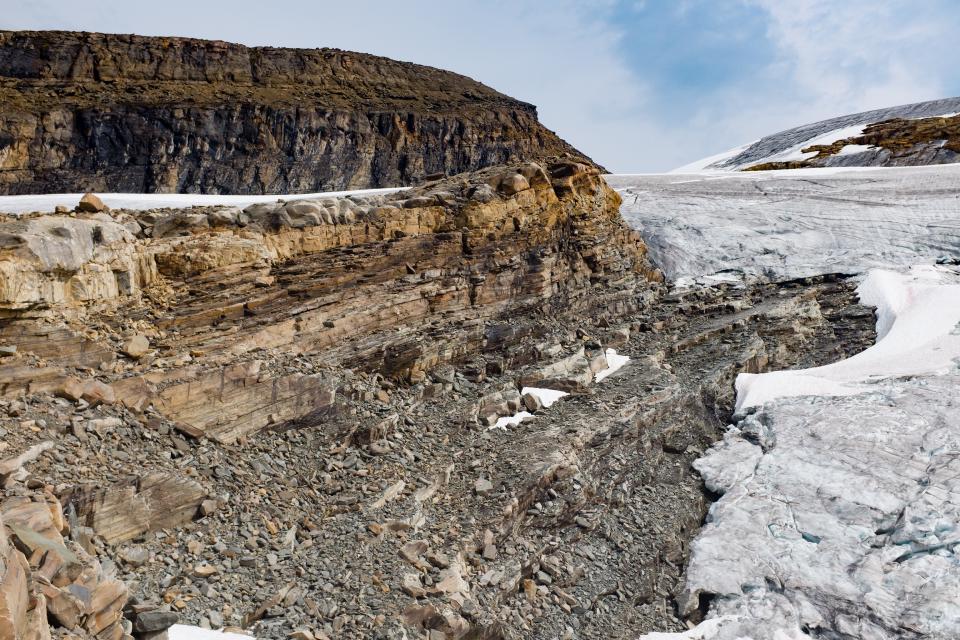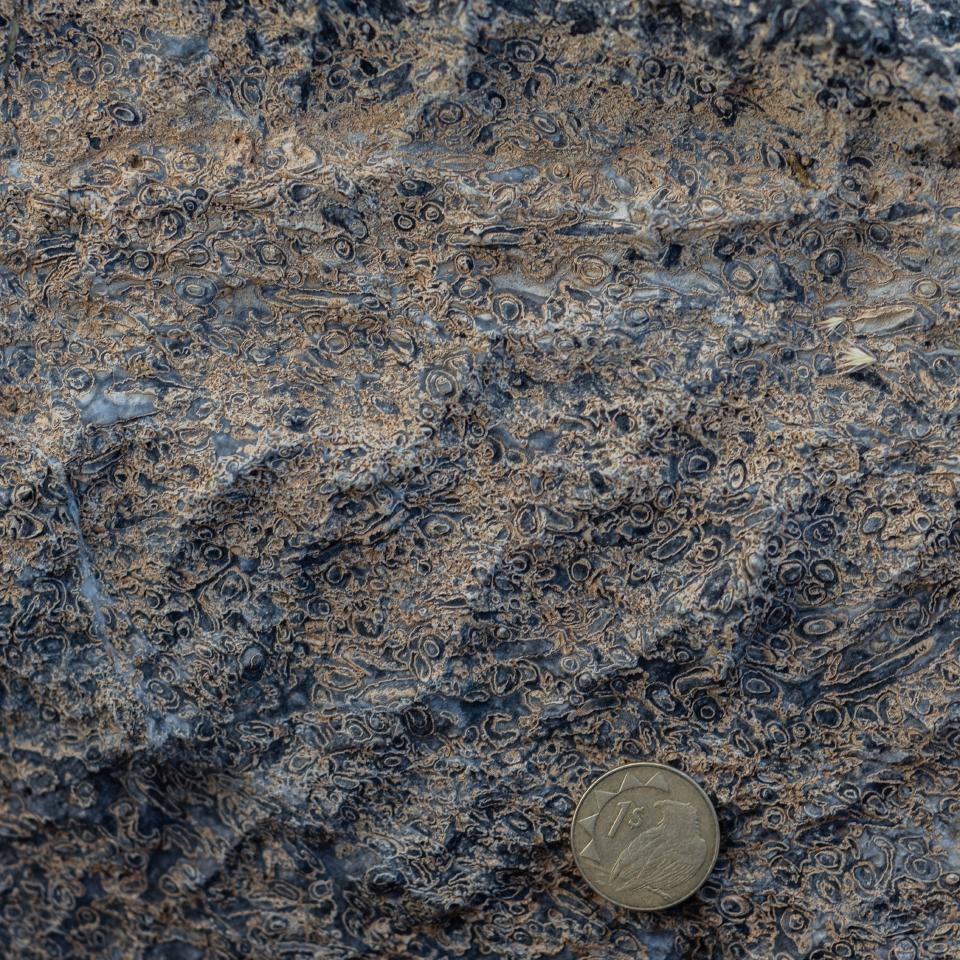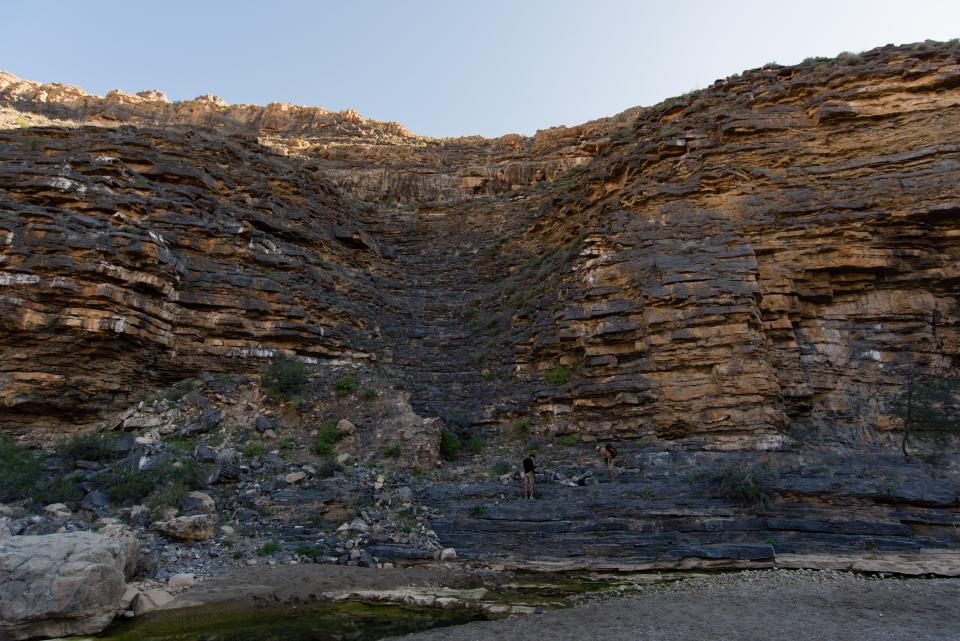Cloudina
A multiscale study of Earth’s first shell-building animal
Ediacaran strata exposed by the retreat of glaciers.
Salient Mountain, British Columbia, Canada
Fuji X100
By geologic standards, the emergence of complex multicellular life is a recent occurrence. While there is evidence of microbial life stretching back to 3.7 billion years ago, molecular clock studies suggest that metazoans (animals) appeared a mere 800 – 750 million years ago (Ma). The earliest fossilized remains of animals occur in Ediacaran strata (635 – 541 Ma) and comprise largely of exceptionally preserved soft-bodied impressions. To date, this record is both incomplete and enigmatic. The first biomineralizing organisms appear towards the end of the Ediacaran, in the form of three fossils of uncertain affinity known as Cloudina, Namapoikia, and Namacalathus.

Bedding plane image of Cloudina.
Driedoornvlakte Farm, Namibia
Nikon D810
The appearance of biomineralization enabled organisms to occupy new environmental niches, changed the way metazoans interacted with each other (e.g., defense against predation) and the environment, and set off an evolutionary arms race that continues today. In a multiscale study that leveraged GIRI, drone imagery, geochemistry, and field observations, I produced the first-ever three dimensional reconstructions of Cloudina, a small, tubular organism frequently found in Ediacaran reef outcroppings. By measuring the size, shape, and orientation of Cloudina from three different reefs, I was able to determine that aggregates of Cloudina were merely transported detrital remains and not, as previous researchers had suggested, evidence of in situ reef construction.

Adrian Tasistro Hart and Raymond Bartolucci prepare to measure a section.
Zebra River Canyon, Namibia
Nikon D810